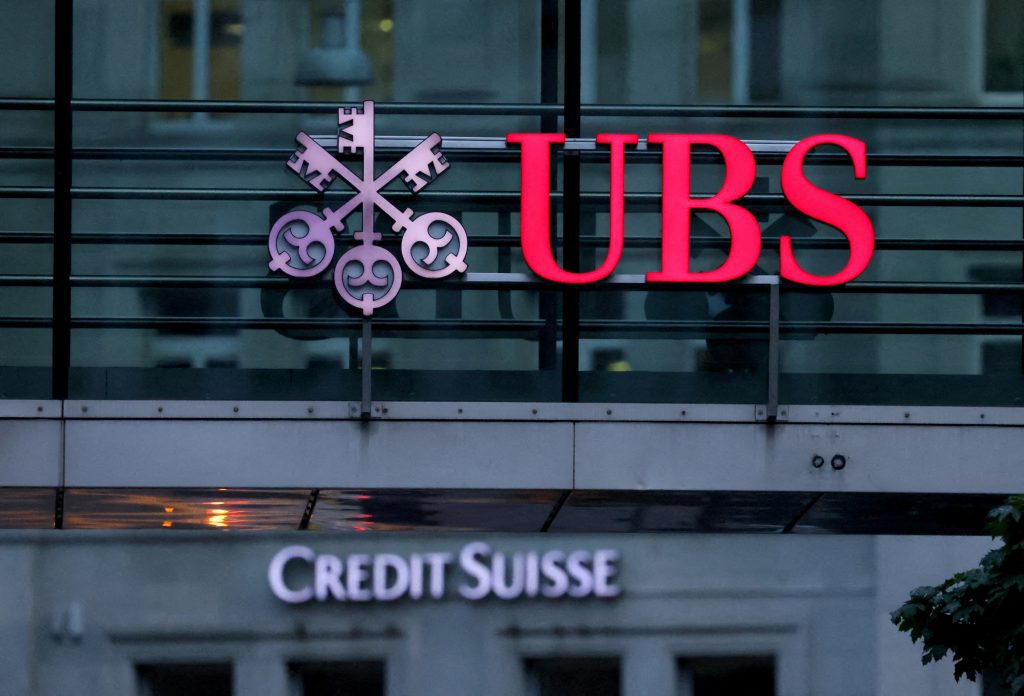
LONDON/FRANKFURT – A year ago Credit Suisse was teetering on the brink of crashing, a scare that sent European bank shares tumbling and the cost of insuring against default soaring, triggered by the Credit Suisse collapse.
Investors were sounding the alarm about the stability of lenders amid turmoil among regional U.S. banks.
UBS’s state-orchestrated rescue of the stricken Swiss peer restored calm. European banks have since staged a striking – if somewhat fragile – recovery, posting record profits and enjoying double-digit gains in their shares.
Below are graphics charting the road to recovery, as well as some potential pitfalls ahead.
STOCKS SOAR
European bank stocks dropped sharply in March last year – Deutsche Bank shares were down more than a fifth for the month and the European banking index had its worst month since the pandemic.
Share prices have since rocketed, led by a 60% gain for UBS and nearly 70% for UniCredit. BNP Paribas and Deutsche Bank shares have underperformed but still gained.
The STOXX Europe 600 banks index has climbed for five straight months and is now at its highest since 2019.
INCOME BOOST
Follpwing the Credit Suisse collapse, fuelling the recovery has been the rebound in bank profitability, aided principally by higher interest rates that have swelled banks’ net interest income – the difference in the money banks pay on deposits and earn on loans.
Banks including Santander, UniCredit and British banks like NatWest have all reported a jump in profits on the back of higher net interest income. Many have doled out huge dividends and buybacks.
Still, as interest rates peak, analysts expect income earnings to plateau and then drop.
AT1 RECOVERY
Additional Tier 1 bonds became the talk of the town when 16 billion Swiss francs ($18 billion) worth of Credit Suisse bonds were written down to zero as part of the UBS rescue.
Other bank AT1 bonds plunged in price, some below 80 and even 60 cents on the euro in late March. The big banks’ AT1s have since recovered sharply.
Concerns about commercial property exposure has sent the prices of some specialty German banks’ bonds plummeting again this year, however, with Deutsche Pfandbriefbank and Aareal AT1 bonds hardest hit.
PROPERTY WEAKNESS
Commercial property is a potential weak spot for banks, with prices slowing sharply as vacancy rates soar and higher borrowing costs put pressure on indebted developers.
Collectively, European banks have 1.4 trillion euros ($1.5 trillion) in exposure. S&P Global estimates overall European bank assets, excluding the United Kingdom, totalled nearly 28 trillion euros last year.
European banks have reduced their exposure to commercial property and can withstand further weakness in prices, Morgan Stanley analysts said this month, although some individual lenders are more exposed.
M&A IS MISSING
UBS’ acquisition of Credit Suisse was the biggest banking merger since the 2008 financial crisis, when a series of lenders in Europe and the United States were forced into emergency mergers.
Outside of crises, big European bank M&A has been virtually non-existent, especially cross-border deals.
Impediments to tie-ups have left European lenders in a more fragile state than their now-dominant American peers, executives and investors say.
($1 = 0.8783 Swiss francs)
($1 = 0.9160 euros)
Inside Telecom provides you with an extensive list of content covering all aspects of the tech industry. Keep an eye on our News sections to stay informed and up-to-date with our daily articles.